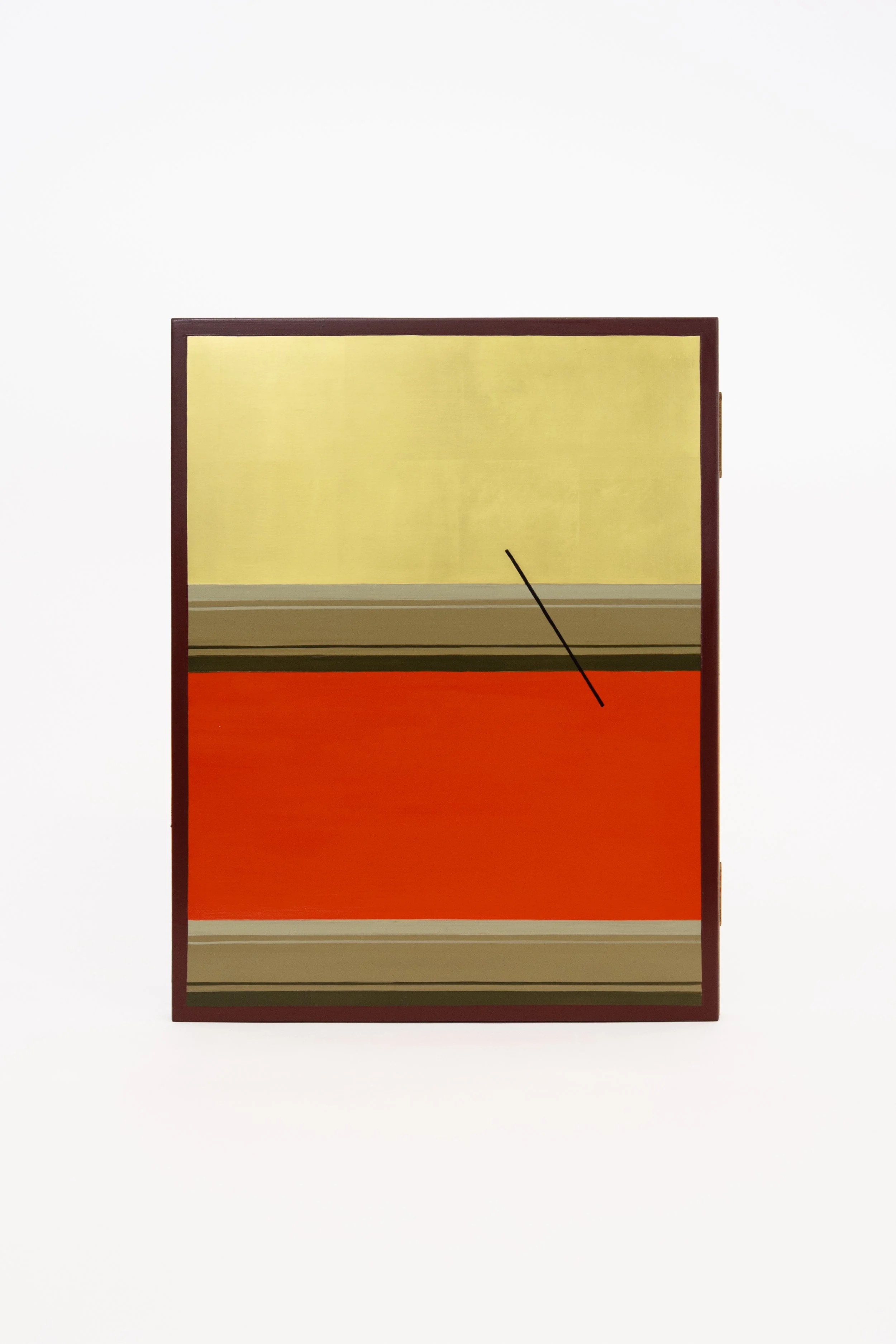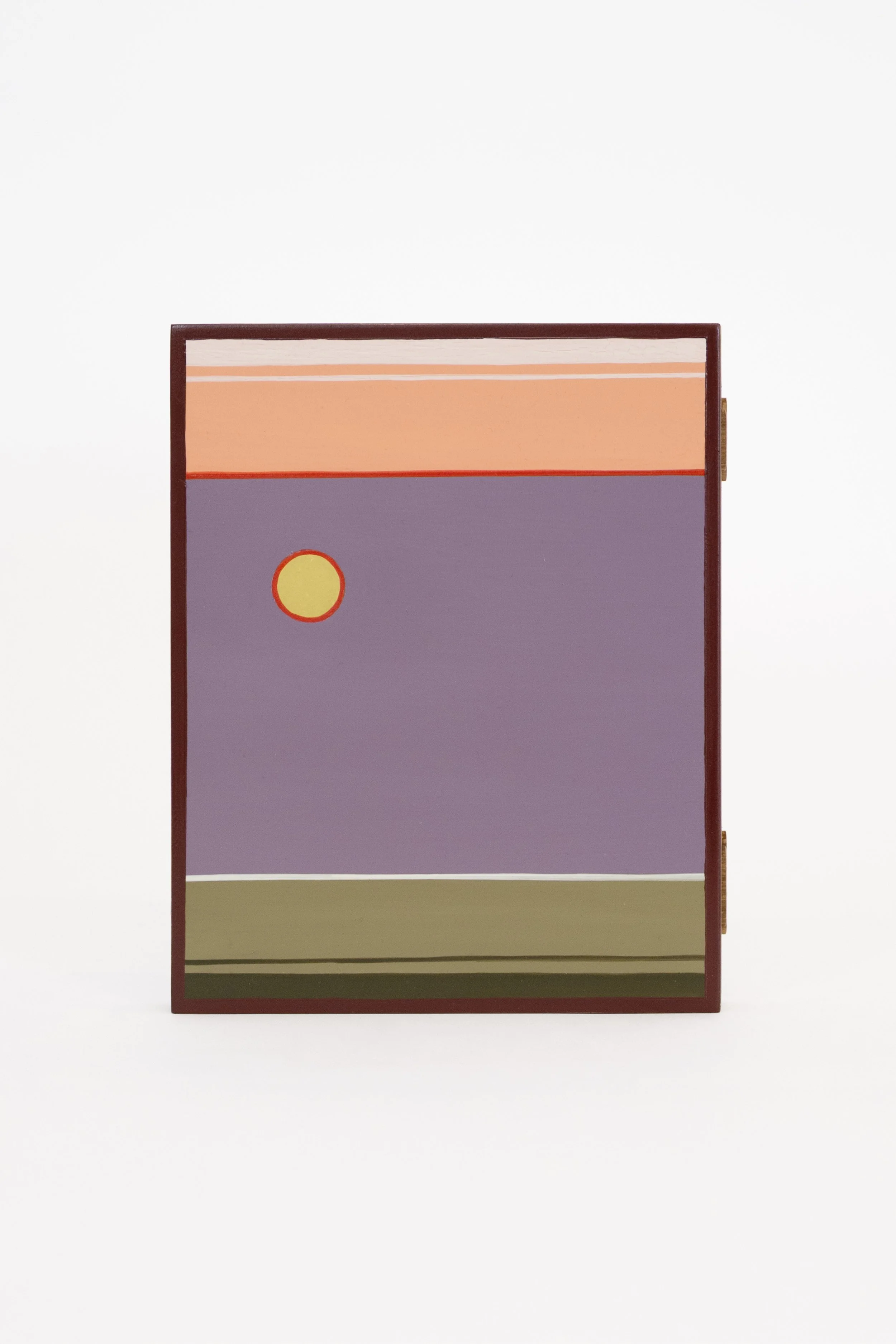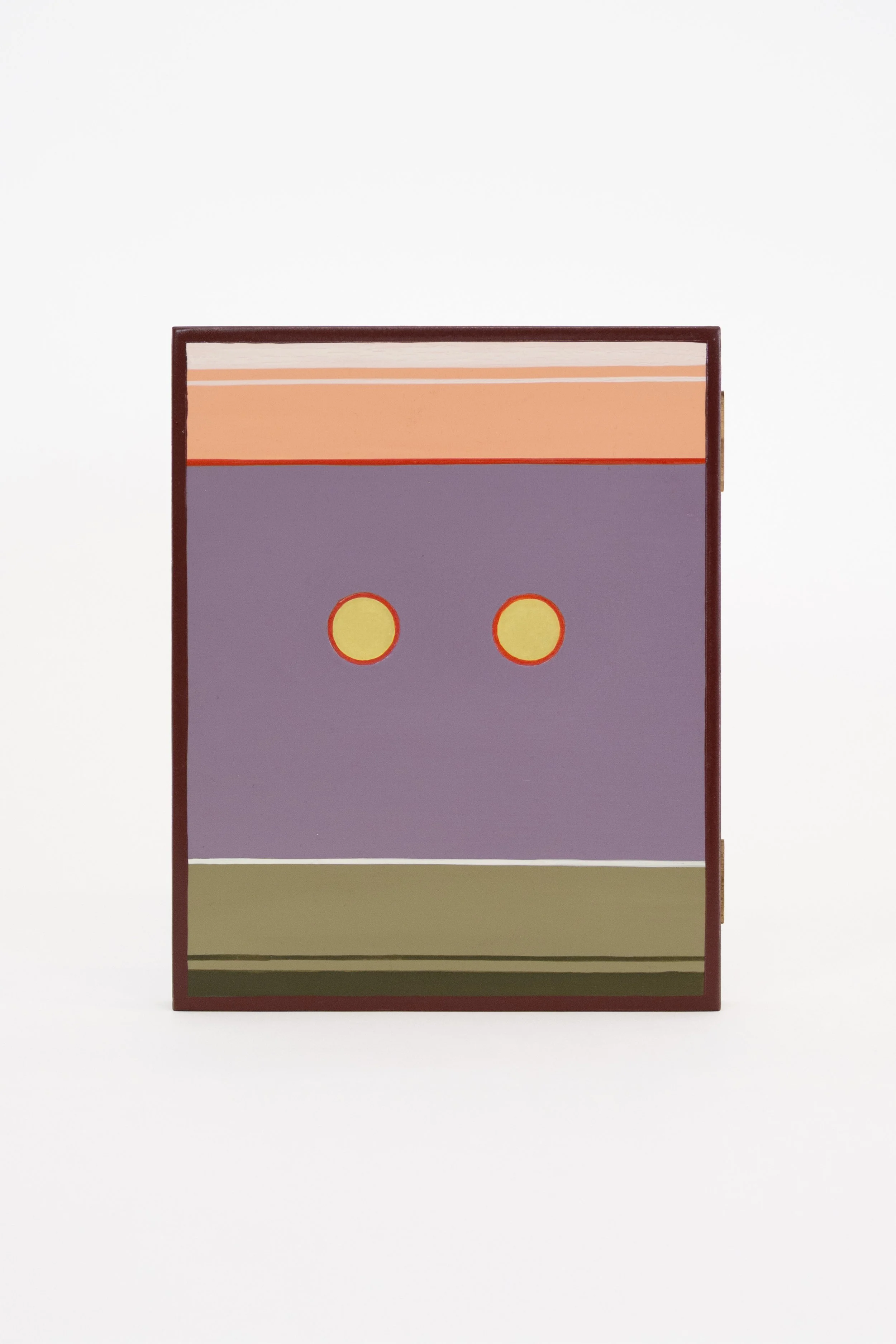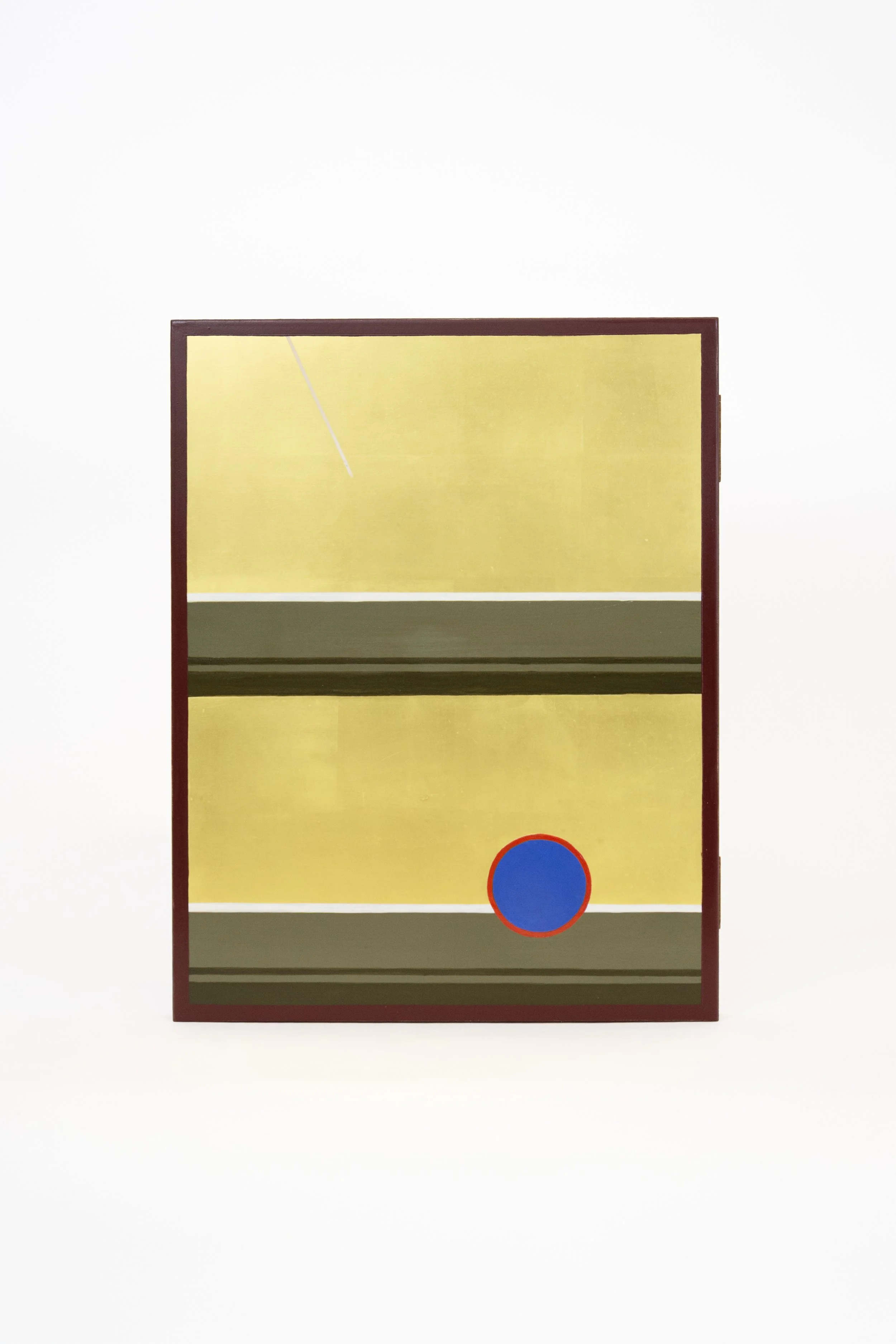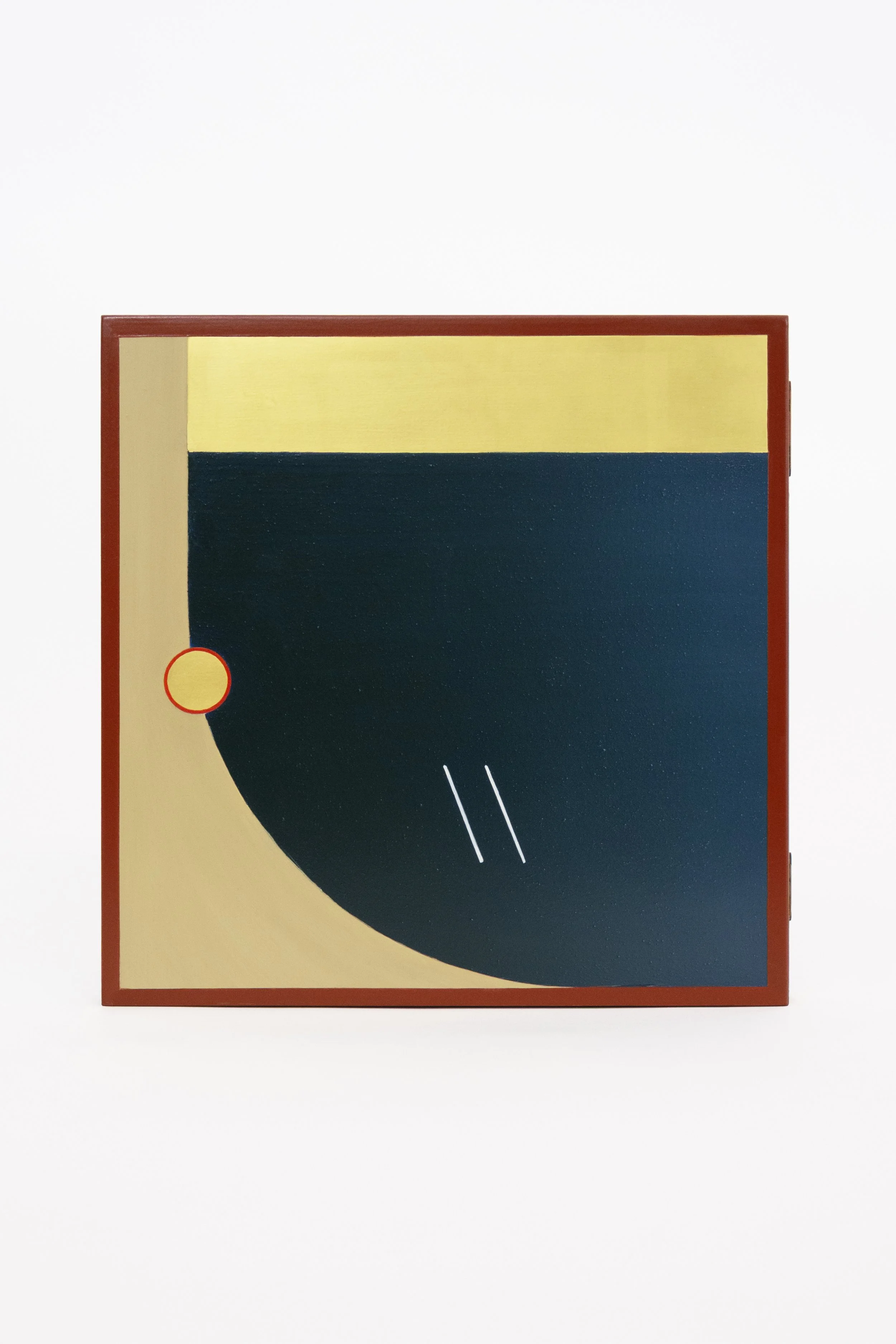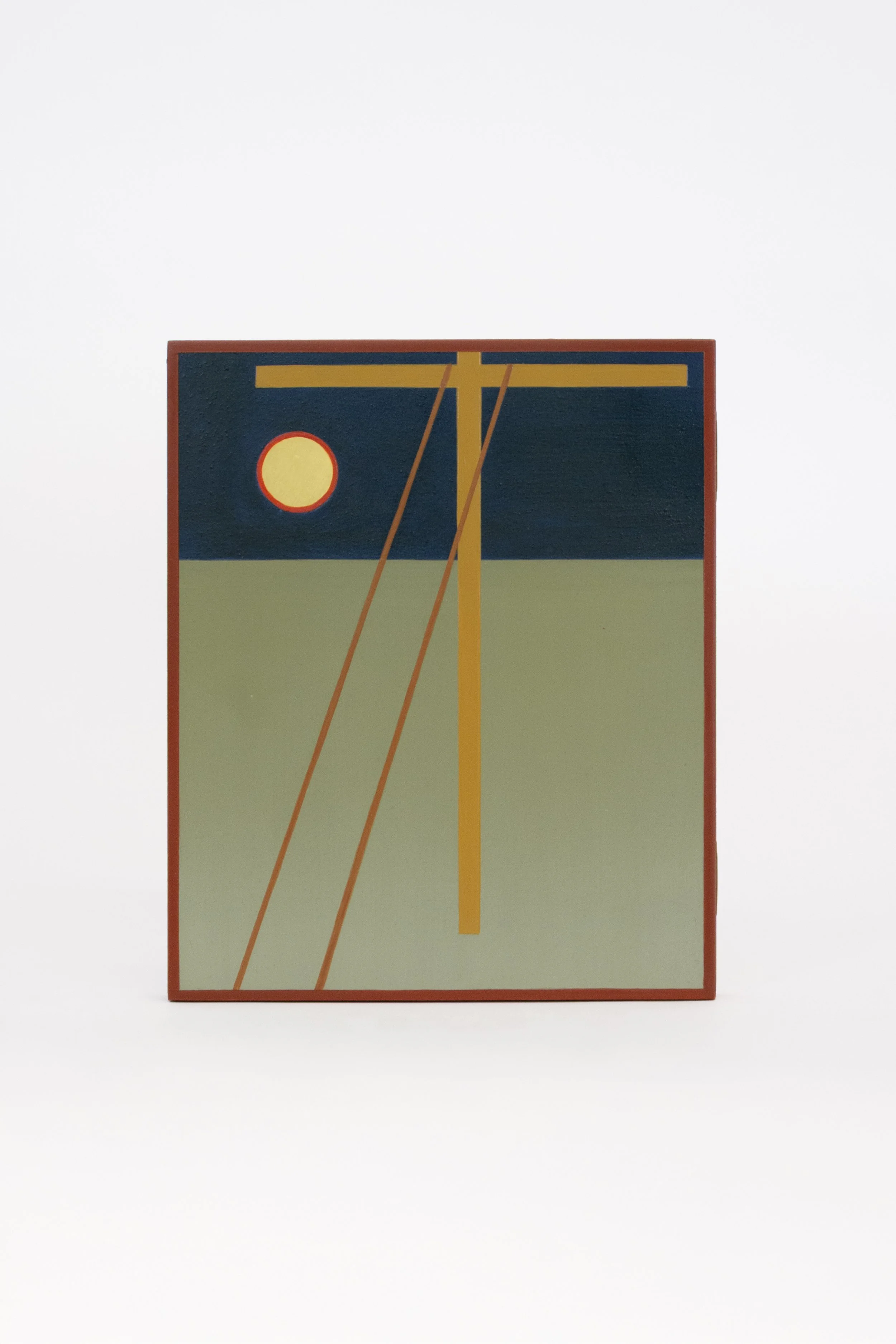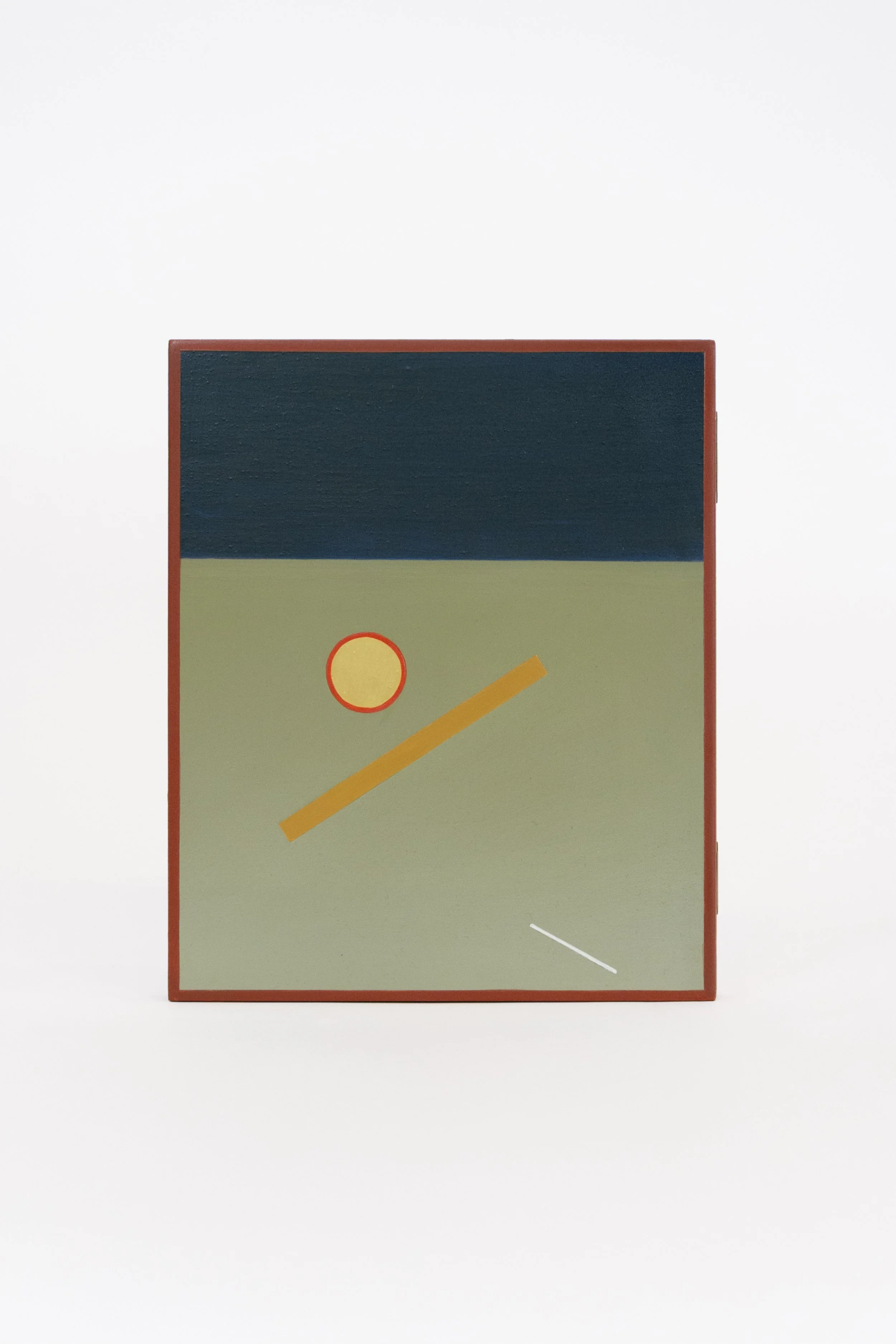Vera Klimentyeva
Doctrine of no matter
Opening Thursday, 30 October, 12.00 - 20.00
Vera Klimentyeva
Untitled Manuscripts series, 2025
Egg tempera and gold leaf on wood
45 × 35 cm
Eiklid / Rusten presents a new body of work by Vienna-based artist Vera Klimentyeva (b. 1988, Moscow). Known for transforming historical iconography into contemporary abstraction, Klimentyeva draws from medieval manuscripts, sacred symbols, and traditional techniques to create paintings that oscillate between the spiritual and the political. Circles, lines, and horizons become vessels for reflection, inviting viewers to navigate the space between belief and interpretation.
ABOUT
Vera Klimentyeva (b. 1988, Moscow; lives and works in Vienna) explores how visual languages of power, devotion, and meaning shift across time. Working with egg tempera, gold leaf, and limewood panels, she draws on the centuries-old traditions of manuscript illumination and religious icon painting while subjecting them to a process of radical reduction. Figures disappear, narratives dissolve, and what remains are essential forms: circles, lines, halos, and empty fields of gold. In this pared-down vocabulary, Klimentyeva’s work opens a space where art becomes a vehicle for contemplation rather than instruction, and where the sacred is sensed rather than depicted.
This exhibition, Doctrine of No Matter, is structured in two interrelated parts that together chart the arc of this investigation.
The first presents works from her ongoing Untitled Manuscripts series, rooted in the visual world of medieval illumination. Inspired by sources such as the Bamberg Apocalypse (c. 1000), Klimentyeva distills these complex compositions to their structural essence. She eliminates the paternalistic figures of saints and angels, preserving instead the scaffolding of sacred space: halos become geometric signs, landscapes flatten into abstracted topographies, and the heavy presence of religious authority is replaced by an open field of perception.
The second body of work turns toward the early Italian Renaissance and the celebrated exhibition Siena: The Rise of Painting, 1300–1350, which reframed the achievements of Duccio di Buoninsegna, Simone Martini, and the Lorenzetti brothers. Klimentyeva engages directly with the legacy of this period, reimagining the devotional panel painting for a contemporary context. The gold ground, once a sign of divine light, becomes a metaphor for human longing. The carefully balanced compositions and subtle chromatic harmonies are retained, yet their narratives are stripped away, leaving behind meditations on material, form, and transcendence.
Across both series, Klimentyeva’s practice asks what happens when art is no longer tasked with representing power or divinity, but with evoking their presence through absence. Doctrine of No Matter proposes a belief system built not on substance or depiction, but on what persists when those structures are removed, a visual language that speaks quietly, yet with profound intensity, to the enduring human search for meaning.
-
2005 - 2008: Moscow State University of Printing Arts, Graphic Arts Department, Prof. A. Livanov, Prof. V. Tzepilov, Prof. V. Kosynkin;
2008 - 2014: Academy of fine Arts Vienna / Abstract painting, Prof. Mag. Erwin Bohatsch.
2014 - 2018: Academy of fine Arts Vienna / Art and cultural Studies
-
Vera Klimentyeva Untitled Manuscripts series, 2025 Egg tempera and gold leaf on wood 45 × 35 cm
Vera Klimentyeva Untitled Manuscripts series, 2025 Egg tempera and gold leaf on wood 45 × 35 cm
Vera Klimentyeva Untitled Manuscripts series, 2025 Egg tempera and gold leaf on wood 25 × 20 cm
Vera Klimentyeva Untitled Manuscripts series, 2025 Egg tempera and gold leaf on wood 25 × 20 cm
Vera Klimentyeva Untitled Manuscripts series, 2025 Egg tempera and gold leaf on wood 25 × 20 cm
Vera Klimentyeva Untitled Manuscripts series, 2025 Egg tempera and gold leaf on wood 45 × 35 cm
Vera Klimentyeva Untitled (renaissance), 2025 Egg tempera and gold leaf on wood 50 x 40 cm
Vera Klimentyeva Untitled (renaissance), 2025 Egg tempera and gold leaf on wood 30 × 30 cm
Vera Klimentyeva Untitled (renaissance), 2025 Egg tempera and gold leaf on wood 35 × 35 cm
Vera Klimentyeva Untitled (renaissance), 2025 Egg tempera and gold leaf on wood 35 x 35 cm
Vera Klimentyeva Untitled (renaissance), 2025 Egg tempera and gold leaf on wood 30 x 25 cm
Vera Klimentyeva Untitled (renaissance), 2025 Egg tempera and gold leaf on wood 30 x 25 cm
Vera Klimentyeva Untitled (renaissance), 2025 Egg tempera and gold leaf on wood 45 × 45 cm

